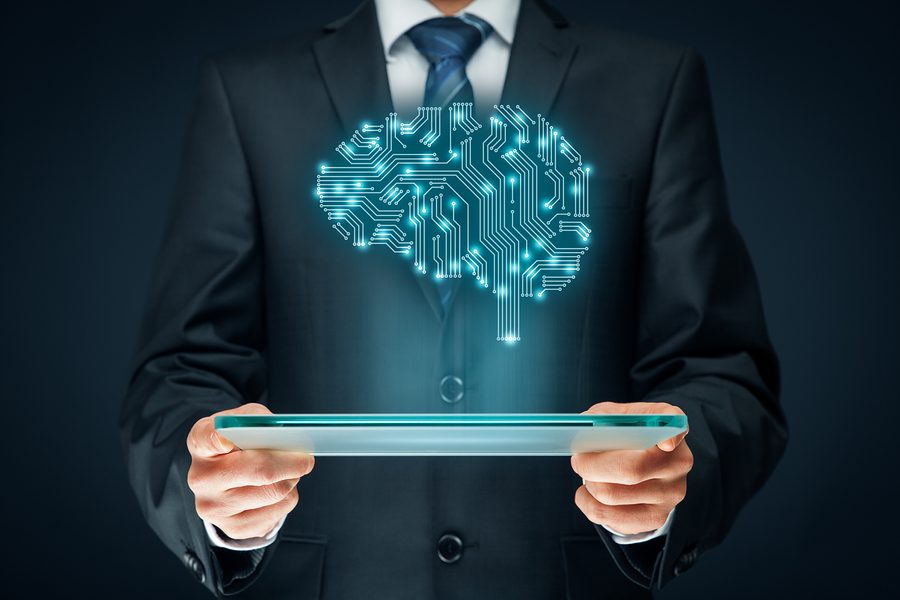The future of artificial intelligence: Myths, realities and aspirations


used with permission from the Microsoft Next Blog
by Allison Linn
The future of artificial intelligence: Myths, realities and aspirations
Only a few years ago, it would have seemed improbable to assume that a piece of technology could quickly and accurately understand most of what you say – let alone translate it into another language.
A new wave of artificial intelligence breakthroughs is making it possible for technology to do all sorts of things we at first can’t believe and then quickly take for granted. That’s making our lives easier and more productive, and it’s also raising a new round of excitement and angst about where artificial intelligence is headed.
“Right now we’re in a phase of very fast advances, and that may well continue for a small number of years,” said Christopher Bishop, a distinguished scientist with Microsoft Research Cambridge.
With advances in machine learning, including deep neural networks and probabilistic models, computers can now instantly translate spoken and written conversation, recognize and accurately caption photos, identify faces and be your personal assistant.
And yet, although they can do some individual tasks as well as or even better than humans, technology still cannot approach the complex thinking that humans have.
“It’s a long way from general intelligence,” Bishop said.
This week, Bishop and Eric Horvitz, distinguished scientist and managing director of Microsoft Research’s Redmond lab, will host a panel of experts to discuss progress in artificial intelligence: myths, realities and aspirations. The panel is part of Microsoft Research’s annual Faculty Summit, and it will be streaming online for anyone who wants to listen.
The latest breakthroughs in artificial intelligence are the result of core advances in AI, including developments in machine learning, reasoning and perception, on a stage set by advances in multiple areas of computer science.
Computing power has increased dramatically and has scaled to the cloud. Meanwhile, the growth of the Web has provided opportunities to collect, store and share large amounts of data.
There also have been great strides in probabilistic modeling, in which computing systems consider uncertainties and make the best solution or recommendation, and machine learning, in which a computer gets better at something based on the data that it receives.
The new capabilities also are coming from advances in specific technologies, such as machine learning methods called neural networks, which can be trained from massive data sets to recognize objects in images or to understand spoken words.
Another promising effort is “integrative AI,” in which competencies including vision, speech, natural language, machine learning and planning are brought together to create more capable systems, such as one that can see, understand and converse with people.
Horvitz noted that these new advances also are being driven by consumers, who have quickly gotten used to a world in which technology understands everyday speech, recommends books and movies, rids your inbox of unwanted spam and clutter and finds you the fastest route home in rush hour traffic.
“We see more and more of these successes in daily life,” Horvitz said. “We quickly grow accustomed to them and come to expect them.”
That, in turn, means that big technology companies are growing more dependent on building successful artificial intelligence-based systems.
“AI has become more central to the competitive landscape for these companies,” Horvitz said.
In the long run, Horvitz sees vast potential for artificial intelligence to enhance people’s quality of life in areas including education, transportation and healthcare.
Already, he said, research on machine learning has been used in numerous areas of healthcare, such as systems that predict which patients are most at risk for a hospital-acquired infection or for re-admission to a hospital after discharge.
Bishop notes that artificial intelligence also presents the opportunity to have machines do dirty, dangerous or labor-intensive work that people don’t want to do. Artificial intelligence also could be used to tackle some of our most pressing problems, such as hunger or climate change.
“I see a lot of opportunity for humanity,” he said.
Thinking ahead
Despite the recent breakthroughs in artificial intelligence research, many experts believe some of the biggest advances in artificial intelligence are years, if not decades, away. As these systems improve, Horvitz said researchers are creating safeguards to ensure that AI systems will perform safely even in unforeseen situations.
“We have to stay vigilant, be proactive and make good decisions, especially as we build more powerful intelligences, including systems that might be able to outthink us or rethink things in ways that weren’t planned by the creators,” he said.
Researchers, scientific societies and industry experts are building in tools, controls and constraints to prevent unexpected consequences.
They also are constantly evaluating ethical and legal concerns, to make sure that as they get better at artificial intelligence-driven technology they’re already thinking through potential dilemmas. That will only grow more important as AI gets incorporated into high-stakes areas like cars, medicine and defense, Horvitz said.
In many ways, Horvitz noted, the idea that computers can do something better or faster than humans is nothing new. After all, calculators have been doing that since the 1940s.
Horvitz also noted that artificial intelligence has consistently proved more difficult than expected. When the earliest work on artificial intelligence began in the 1950s, researchers confidently predicted that it in as little as two decades computers would be able to do most tasks that humans can do.
“They thought things would go very quickly, and they didn’t,” Horvitz said. “We’re still in the thick of it.”
Recent Posts
The Role of Data Science, Data Engineering, and Data Analytics in Small- to Medium-Sized Business Growth
Data is an increasingly valuable asset that can drive strategic decision-making, enhance operational efficiency, and…
On-Premises Exchange Mail Server vs. Cloud-Based Exchange
Choosing the right email infrastructure is a critical decision for any business. Since email is…
Impacting the Future of Technology with Machine Learning
Machine learning (ML) is one powerful way to enable computers to learn on their own…
Getting Familiar With Microsoft 365
In the fast-paced digital world of the 21st century, businesses need tools to optimize communication,…
Copilot Prompts to Strengthen Cybersecurity
What if you could have a business expert available 24/7 that understands your business and…
Copilot Prompts to Reduce Expenses
Reviewing expenses, vendors, and pricing strategy can put your business in a fantastic position to…


